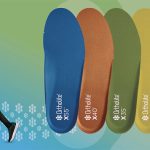Big 5 Sporting Goods Corporation reported net sales of $175.6 million for the fiscal 2025 first quarter ended March 30, compared to net sales of $193.4 million for the first quarter of fiscal 2024. First quarter same-store sales (comps) decreased 7.8 percent year-over-year (y/y), a deeper decline than the 6.1 percent decrease in the holiday quarter.
“Our sales in January and February were particularly difficult as we fought against highly unfavorable seasonal weather comparisons which resulted in winter-related sales that were down nearly 25 percent,” offered company Chairman, President and CEO Steven G. Miller on a conference call with analysts. “Although we experienced pockets of more normal seasonal winter weather, the southern tier of our store footprint was especially challenged. That said, sales trending improved substantially in March as positive winter weather set in late in the season.”
Miller said March same-store sales were flat year-over-year, which included an approximate 300 basis point benefit associated with the Easter calendar shift. The holiday, when stores are closed, moved into the second quarter this year versus the first quarter last year.
“This performance in March marked a significant improvement from the double-digit declines we experienced earlier in the quarter,” Miller noted.
Category Summary
- Hardgoods same-store sales decreased 4.7 percent in the first quarter.
- Apparel comps declined 8.7 percent year-over-year.
- Footwear comps were down 11.8 percent in the quarter.
The CEO said the unfavorable weather comparison impacted the Apparel and Footwear categories. Transactions for the period were down 5.3 percent, and average sales were down 2.5 percent.
Income Statement Summary
Gross profit for the fiscal 2025 first quarter was $54.3 million, compared to $60.4 million in the 2024 first quarter. The company’s gross profit margin was 30.9 percent of net sales in Q1, down 30 basis points from the 31.2 percent posted in the first quarter last year, primarily reflecting higher store occupancy expense as a percentage of net sales and lower merchandise margins, which declined 78 basis points y/y.
Overall selling and administrative expense for the quarter decreased by $0.6 million from the prior year, reflecting decreases in labor costs and reduced credit card fees related to lower sales. As a percentage of net sales, selling and administrative expense was 40.3 percent in the fiscal 2025 first quarter, compared to 36.9 percent in the year-ago quarter due to the lower sales base.
The net loss for the first quarter was $17.3 million, or a loss of 78 cents per basic share, compared to a net loss of $8.3 million, or a loss of 38 cents per basic share, in the 2024 first quarter. In connection with the valuation allowance related to deferred tax assets established in the third quarter of fiscal 2024, net loss for the 2025 first quarter does not reflect an income tax benefit, while net loss for the 2024 first quarter reflects an income tax benefit of $2.8 million.
EBITDA, a non-GAAP financial measure, was a negative $12.0 million for the first quarter, compared to a negative $6.5 million in the prior-year quarter.
“Our first quarter performance was in line with our guidance, which reflected an expectation of ongoing macroeconomic headwinds affecting consumer discretionary spending,” offered Miller. “While challenging weather conditions impacted our winter-related sales early in the quarter, particularly across our southern markets, we saw meaningful sequential improvement in March. Although we anticipate our customer base will remain challenged over the balance of the second quarter, we believe we will benefit from fresh seasonal spring and summer product that we brought in ahead of potential tariff increases. We remain focused on delivering value to our increasingly price-conscious consumers while maintaining disciplined operational execution.”
Balance Sheet Summary
The company ended the 2025 fiscal first quarter with $30.9 million of borrowings under the company’s $150.0 million credit facility and a cash balance of $3.9 million.
Merchandise inventories at quarter-end increased by 6.5 percent year-over-year, reflecting the earlier timing of receipts versus the prior-year period.
“This timing difference has proved advantageous,” added Miller. “Not only are we better prepared as we move through spring and enter the key summer selling period, we’ve also significantly mitigated the near-term impact from increased tariff costs, providing valuable time to advance negotiations with our vendors. Although our inventory levels are currently higher than last year, we anticipate that they will normalize relative to last year as we move through summer and expect to be in a lower inventory position year-over-year at year-end.”
Stores
Big 5 closed eight stores in the first quarter of fiscal 2025 and anticipates closing approximately seven additional stores over the remainder of the year.
“As part of our broader strategic initiatives, we continue to optimize our store portfolio to focus our resources on our most productive stores,” Miller commented.
Second Quarter Guidance
The CEO noted that second quarter-to-date sales are reportedly down in the high-single-digit range, in part reflecting an approximate negative 400 basis point impact from one less sales day in the period to date due to the Easter calendar shift.
“Notwithstanding the fluidity of the macroeconomic conditions, the key to our results this quarter will be capitalizing on sales opportunities around the higher volume periods surrounding Memorial Day, Father’s Day and the start of summer,” Miller shared. “We believe we are well prepared for this period with healthy inventory levels of key products which we received in front of any tariff impact. We are encouraged by the early reads of our summer seasonal categories that we’ve experienced on the occasions thus far when we’ve seen snippets of warm weather in our geographies.”
For the fiscal 2025 second quarter, the company expects same-store sales to be down in the low- to mid-single-digit range compared to the fiscal 2024 second quarter. The company’s same-store sales guidance reflects an expectation that macroeconomic headwinds will continue to impact discretionary consumer spending over the balance of the second quarter.
The retailer said this guidance also reflects the combined negative impact of calendar shifts associated with the Easter holiday, during which the company’s stores are closed, from the first quarter of fiscal 2024 and into the second quarter of fiscal 2025, and with the Fourth of July holiday, which will move one day further into the third quarter this year.
Fiscal 2025 second-quarter net loss per basic share is expected in the range of 75 cents to 90 cents, which reflects no tax benefit for the period, compared to fiscal 2024 second-quarter net loss per basic share of 46 cents, which reflected a tax benefit of 16 cents per basic share.
Tariffs Impact
Again, Miller noted that the company brought in extra product in advance of tariffs, which should minimize its impacts in the near term. Looking further ahead, he said it is a fluid situation. And, like all retailers, Big 5 will continue to closely monitor tariffs and their impact on the supply chain, consumer sentiment, and, consequently, consumer discretionary spending.
“The overall environment is uncertain right now, but as matters progress, we will remain nimble and evolve as needed by adjusting our purchasing,” said Miller. “In the meantime, we are focused on the aspects of our business that we can best control to continue delivering value to our customers as we have throughout our long history.”
Store Openings and Closings
The company currently has 414 stores in operation, reflecting eight store closures in the 2025 first quarter as part of its ongoing efforts to optimize its store base. During the remainder of fiscal 2025, the company expects to close approximately seven additional stores and does not expect to open any new stores.
Image courtesy Big 5 Sporting Goods Corporation
















